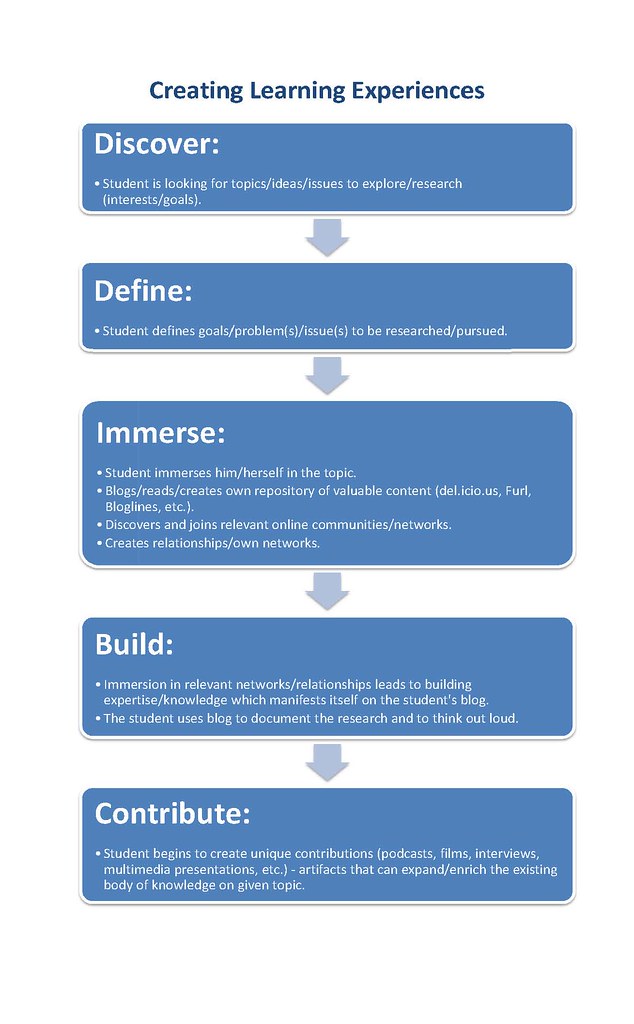An excellent post from Graham Wegner which he refers back to a post by Konrad Glogowski had me thinking about the way in which students work on individual projects, and the potential for the use of blogs in this process.
My thinking took me in two directions:
1. Need for “critical friends”
My class has been communicating with a school class in another state, these students were working on a “passion project” for the term. I was concerned that my students were adding only a social connection to this other school and I think I need to strengthen the academic connection – to make the comments and responses from my students more meaningful and purposeful. I want my students to reflect, consider, and engage in conversations with these other students on the topics chosen by these students for their “passion projects”.
I will need to examine the ways my students learn about asking questions about the projects – in-depth and worthwhile questions that will help to clarify or extend the learning about a topic. I need to work with my students to enable them to move on from “I like the part about XXXX – it was very descriptive” to develop deeper, more probing questioning about content.
2. Another way of using blogs
Konrad Glogowski writes:
The one thing that technology makes easier – that blogging makes easier – is the Immerse – Build – Contribute aspect of the model I described.
IMMERSE: I wanted my students to become researchers who locate valuable content, read, interact, and document their learning on the blog by writing entries about the topic and their journey as researchers.
BUILD: The students used their blogs to document their research and to build their own knowledge in their respective fields of expertise. There were many connections that emerged among students researching related ideas. The students interacted with each other by posting comments and by sharing and commenting on resources.
CONTRIBUTE: This final stage happens when, as learners, the students begin to contribute through their own creativity. It happens when, having acquainted themselves with the topic, they begin to rewrite or remix it in their own unique way and thus contribute to and enrich the field they’re researching. This is the stage when the students begin to create unique artifacts that contribute to the existing body of knowledge on a given topic.
Most of my class has been blogging since March this year and to date their blogs have been a way of publishing pieces of writing they have done. I have made a few attempts at getting the class to reflect on classroom activities and to report on school events. But I am quite excited at the ideas that Konrad raises and the uses for blogging he puts forward – blogging as an important, even integral part of the research/learning cycle.
Using blogs to document student learning whilst they are in the middle of their learning is very exciting and is an area I would like to work on and develop with my class.

I think that Konrad is one of the edublogosphere’s finest examples of being an open educator – I hope you scrolled through his comments and noted how he responds personally to everyone who has added to his conversation and invites them to contribute more. Talk about great role modelling for his students. I agree with you, Kim – I believe that his use of blogs is the higher level use we knew deep down that these technologies are capable of – Konrad’s reflections show us how to utilise this and create our own classroom learning communities.
Thanks Graham – I did read Konrad’s comments and they are very inviting. A great model for students and teachers alike. I feel a bit daunted as I am not such an expert “comment replier”.
I like your description of “higher level (blog) use” because it leads nicely to higher level thinking and deep knowledge, which is exactly what we aim for with our students. Exciting possibilities, exciting learning communities, exciting classrooms 🙂
Don’t you just love it!